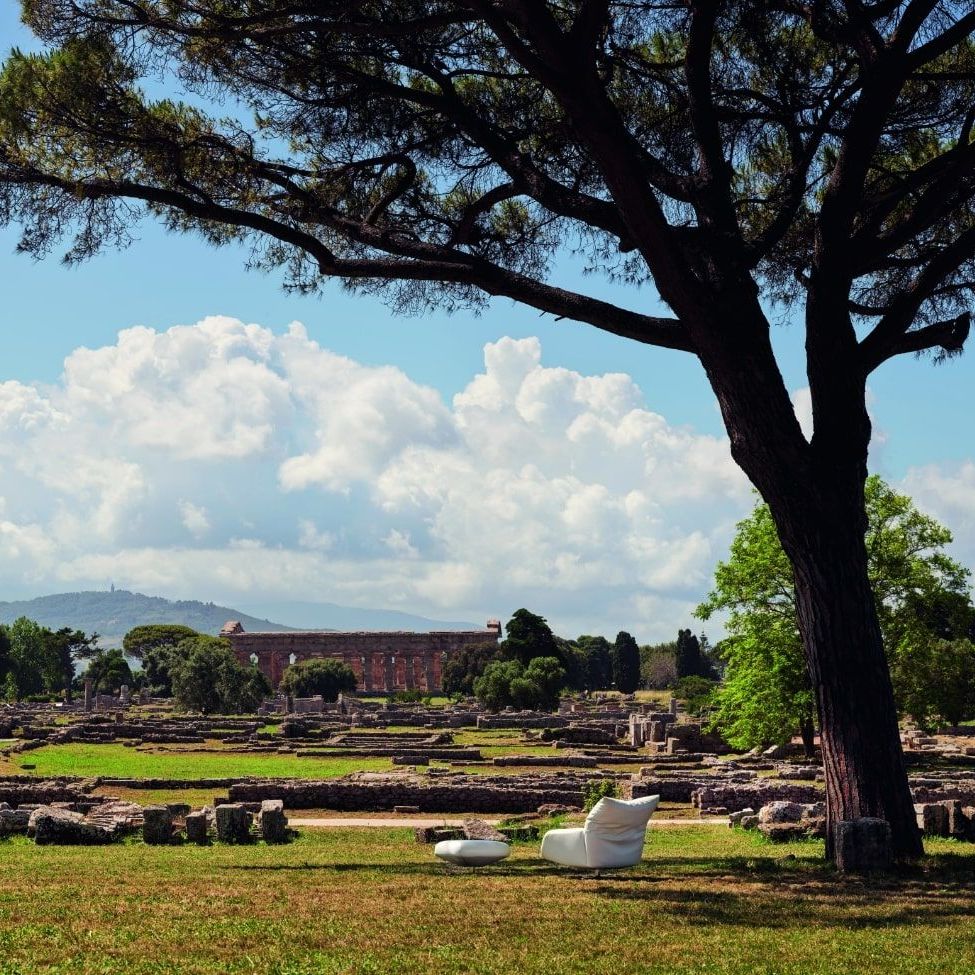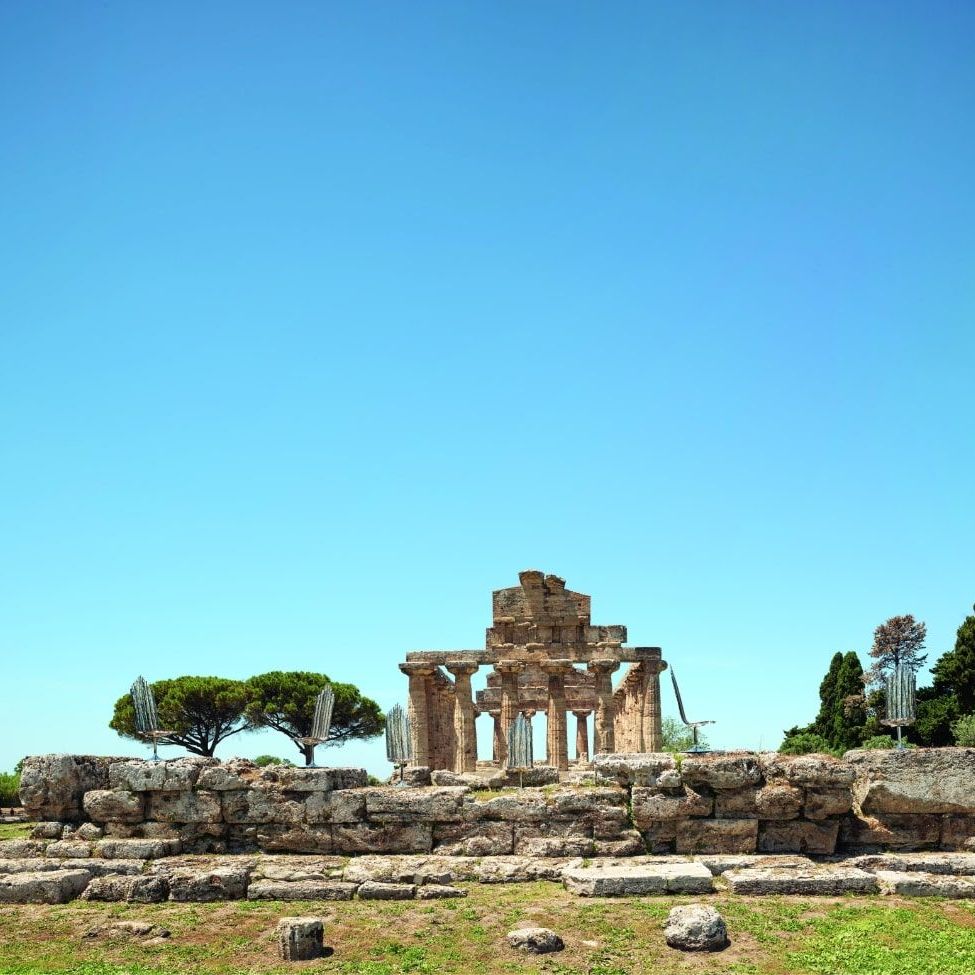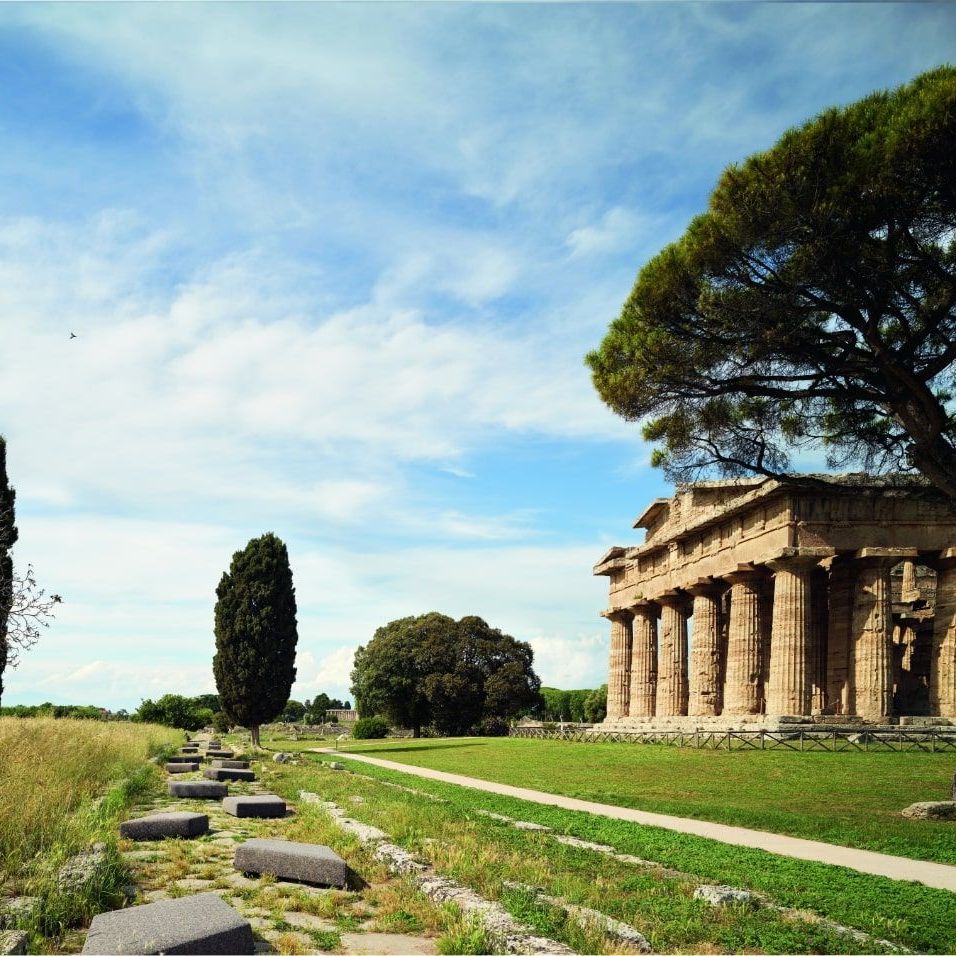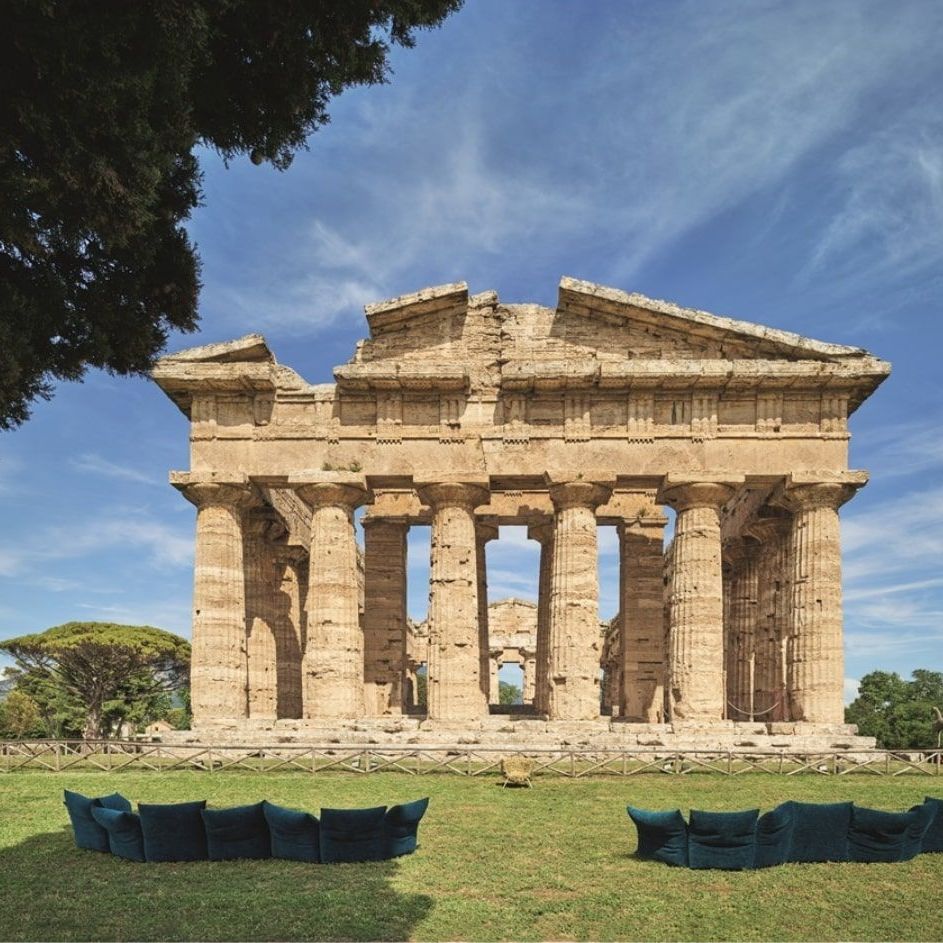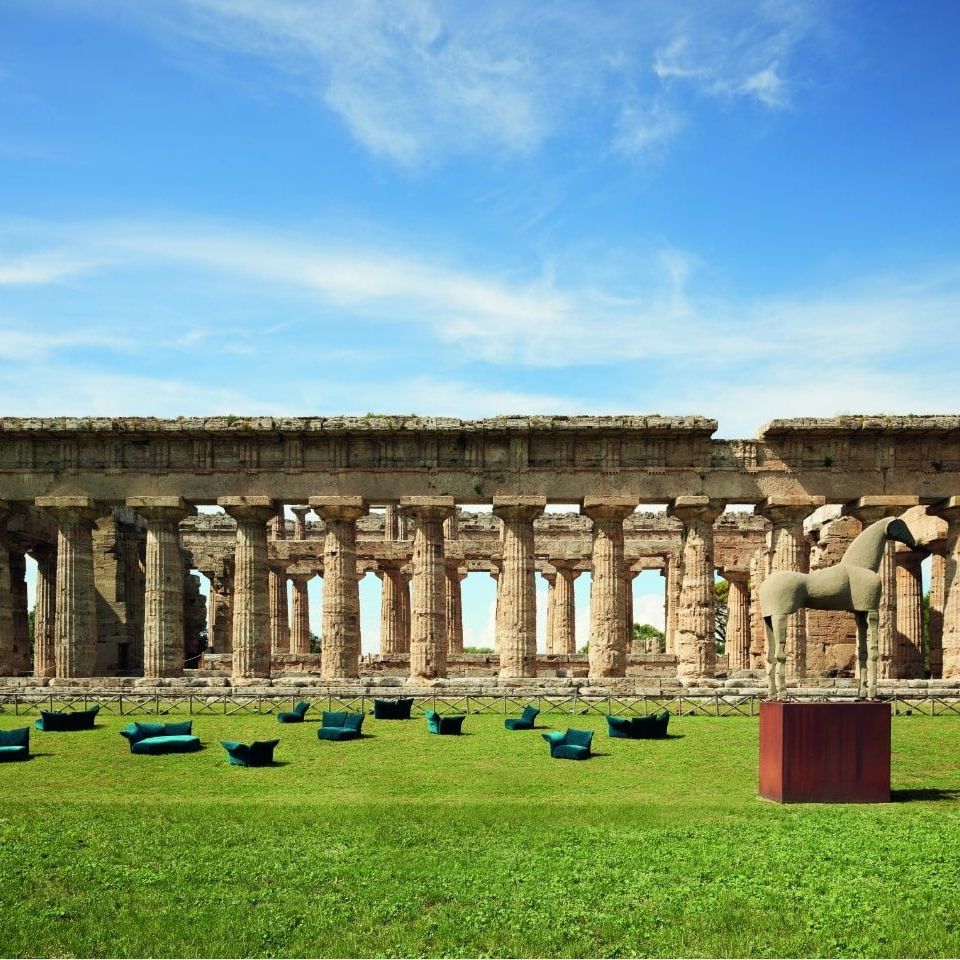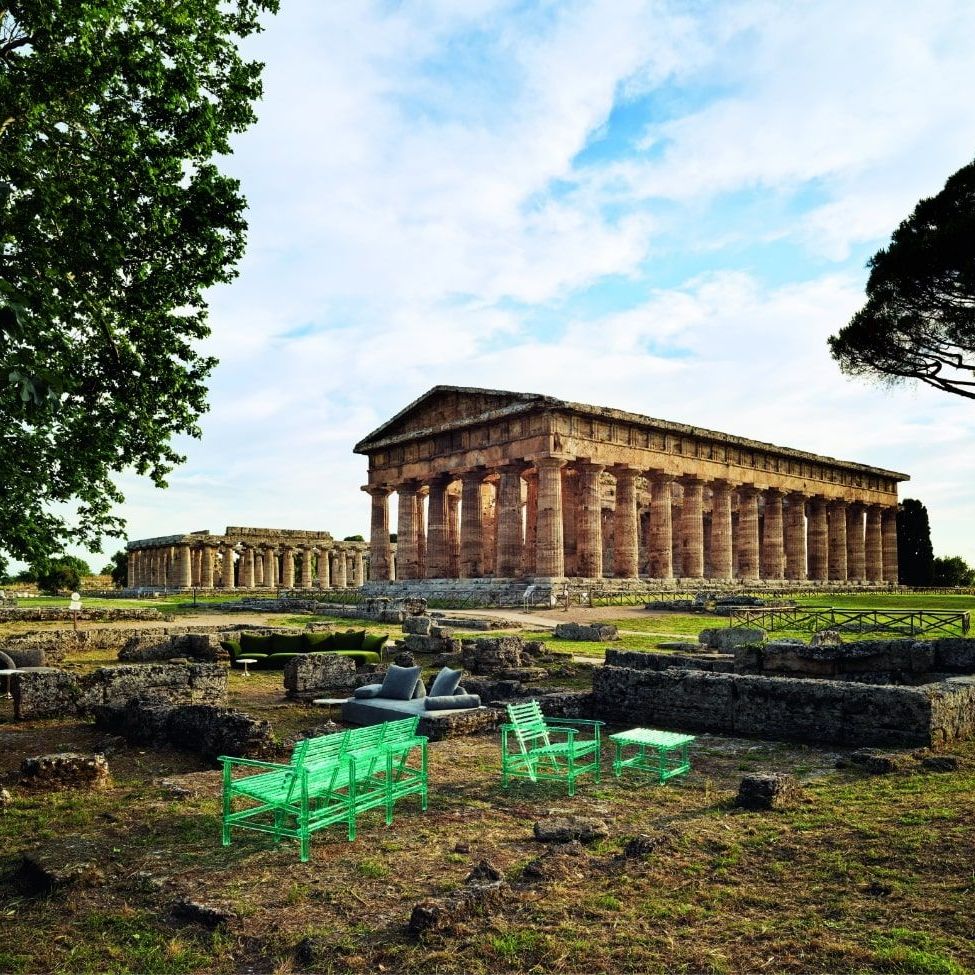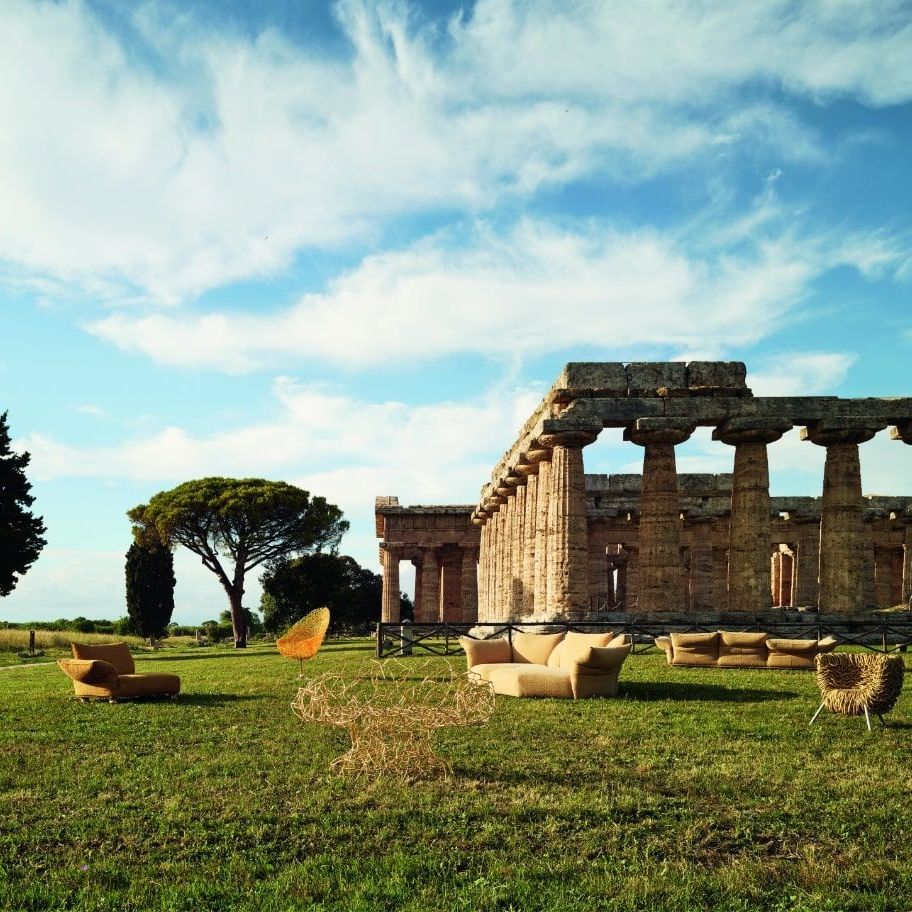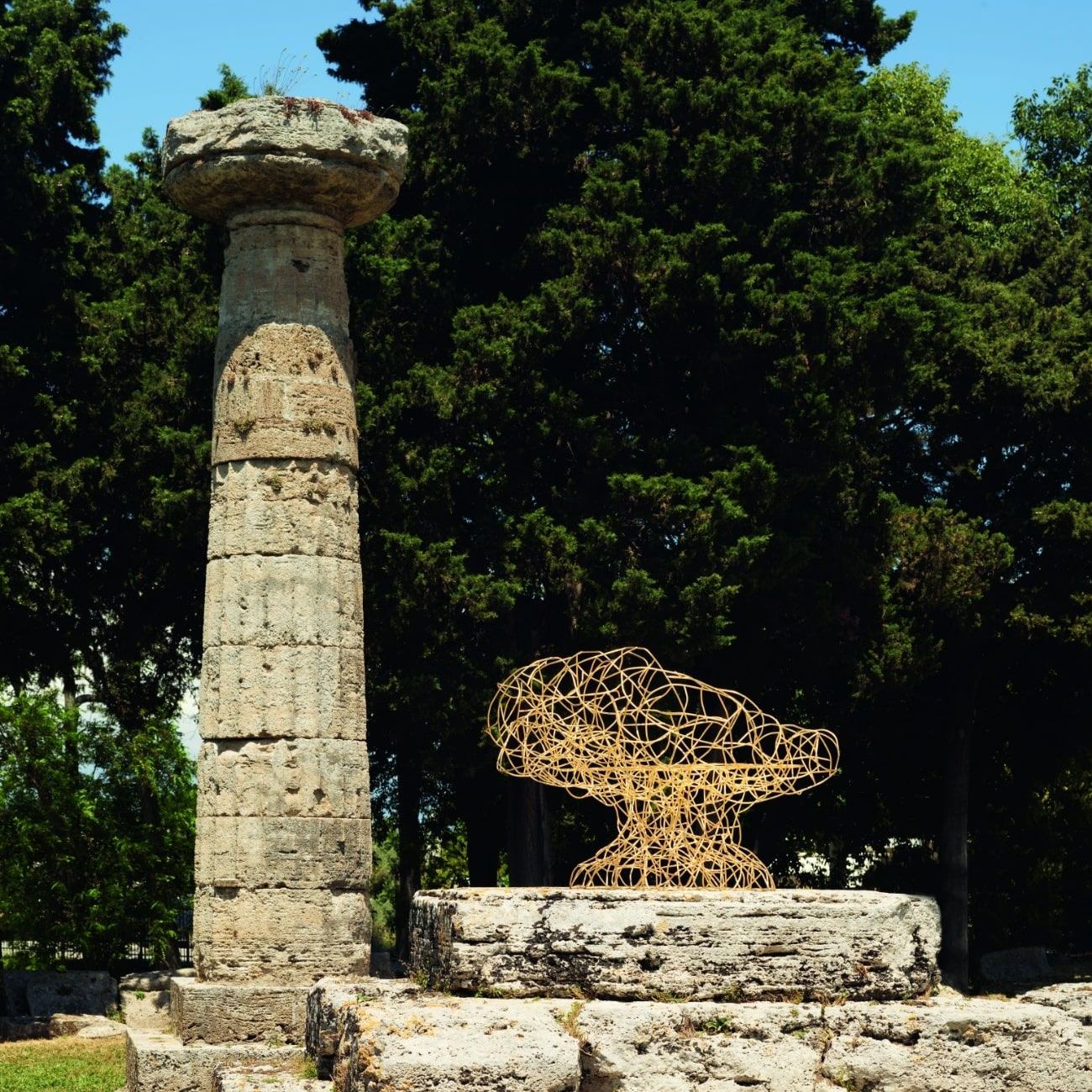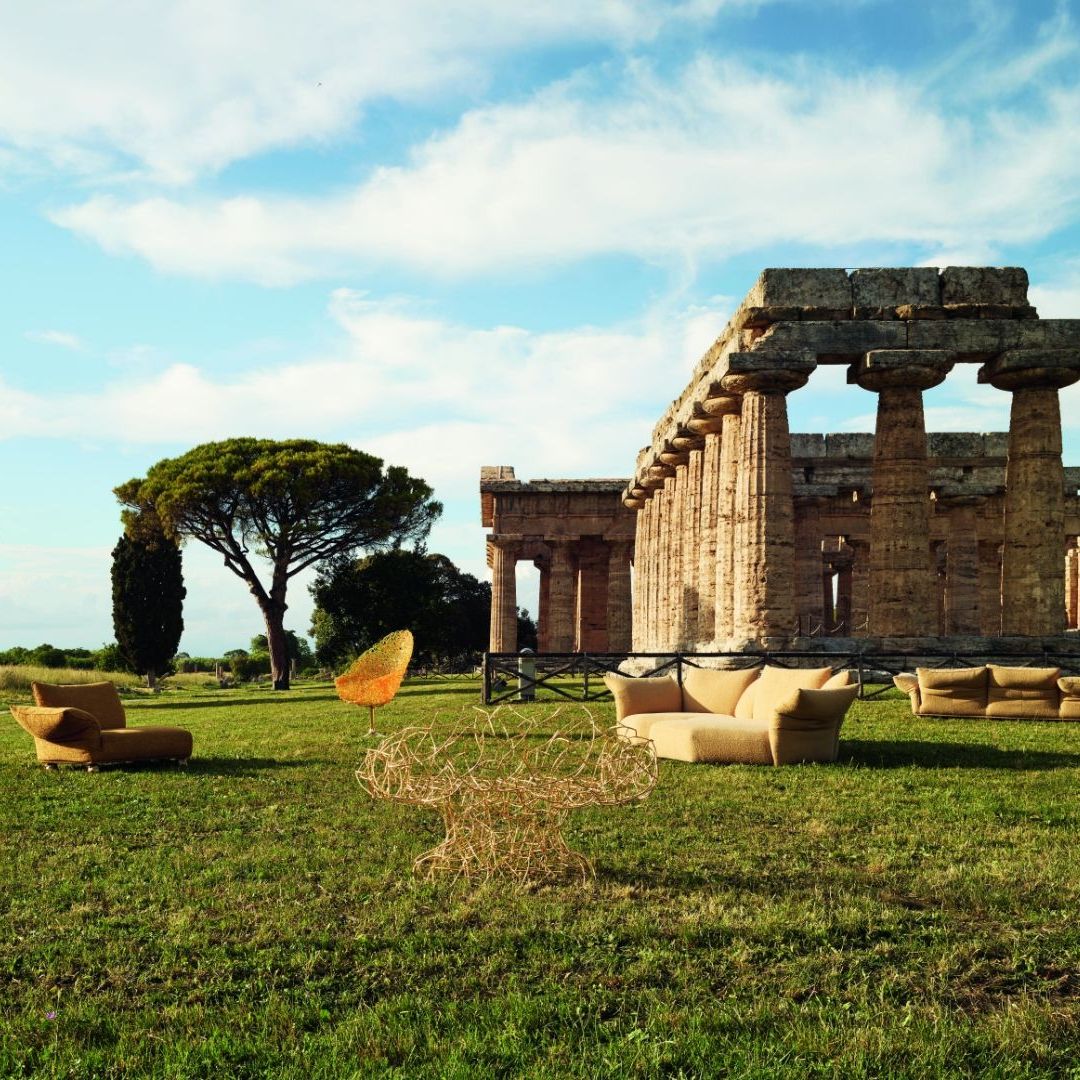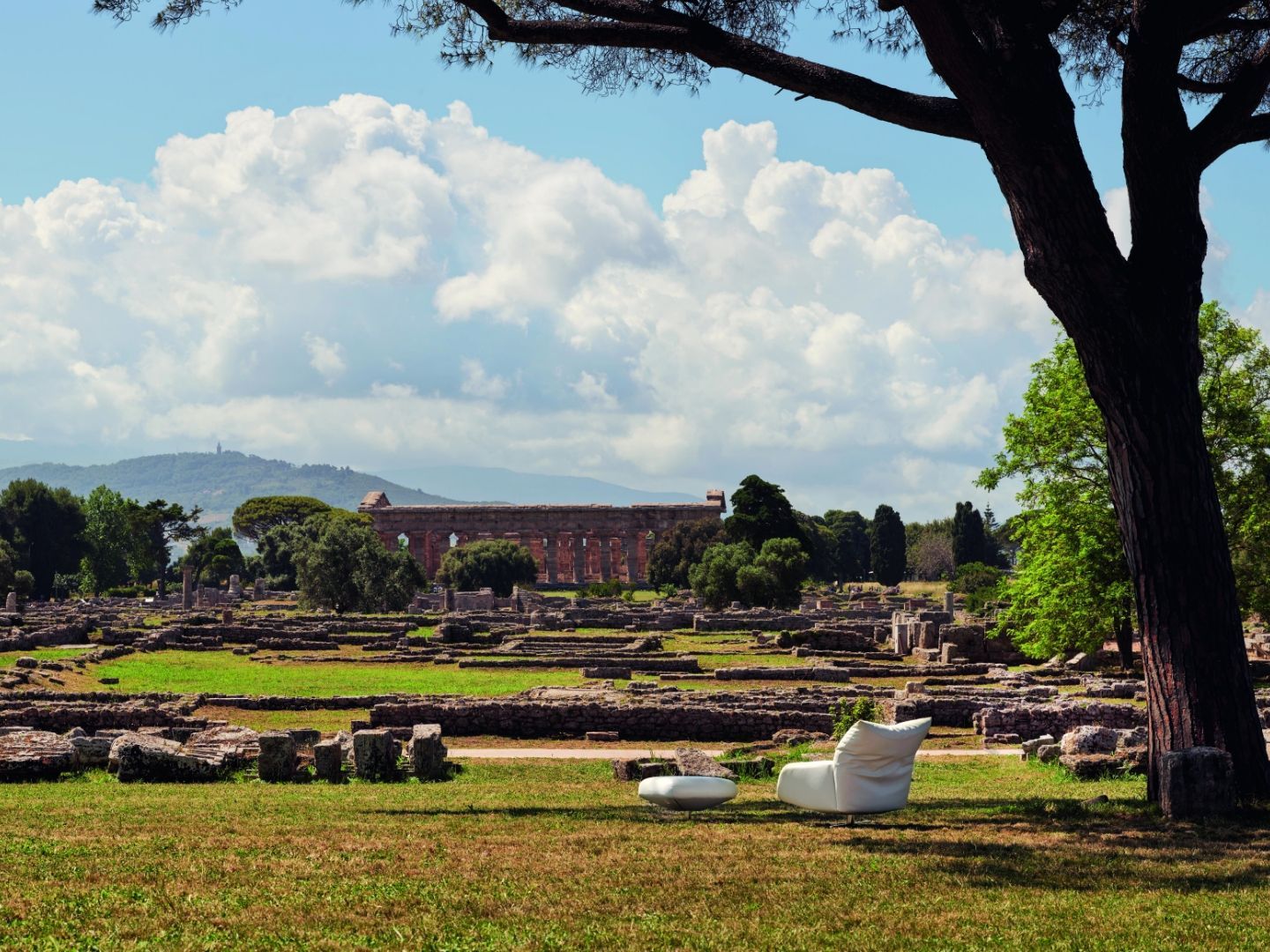
September 2024
Paestum
The Theatre of Time in Ancient Magna Graecia
There are places where time does not simply flow but in some way manifests, becomes visible, allows itself to breathe. Paestum is one of these places. With three large Doric temples dedicated to Greek divinities such as Hera, Athena and Neptune built between the 6th and 5th centuries BC, Paestum is both a place of worship and a symbol of power. Here time takes on three guises, declaring itself in three different ways; the time of history, the time of architecture and the time of myth. Here architecture is revealed in its evolution, becoming the backdrop to a narrative in which gods and heroes interact with human beings. Here time becomes stone and language, the momentum towards the sacred, but rooted in mother Earth. Here generations have passed through, and faded, as the temples themselves remained, reminding us that humans are shorter-lived than many things they are capable of creating.
In Latin, tempus has the same root as templum, so that pre-modern societies had an etymology connecting time with a certain idea of the sacred. This scenario of solemn and breathtaking beauty, of unassailable memory, is the setting chosen by Edra for its collection this year. Almost as if seeking to immerse in classical perfection, artefacts generated with a contemporary creativity and vision. As if to say that even an object must try and come to terms with time. Generally speaking, objects are born with a desire for ubiquity and the awareness they cannot last forever. Objects dominate space but are, in turn, dominated by time. When we consider carefully, space has always posed a double challenge to design objects, first that of being utilisable in and compatible with as many environments as possible (indoor/outdoor, local/global), and second, inhabiting spaces in flexible, space-saving and non-invasive ways (through stacking, storing, dismantling, transporting). Instead the relationship with time has, for the most part, been resolved through acts of pretence; not letting objects show the signs of time in obvious ways, not letting objects that take too much time to create. While space has often been perceived as a challenge, time has often functioned as a threat: the threat of excessive production times (and costs), the threat of surrender to the signs of aging. Most designers have seen time more in terms of failure and risk, than that of opportunity. The choice Edra has made, of placing its collection among the temples of Paestum is a desire to rethink time as opportunity, as willingness, above all as a possible intersection between things born and things perishing.
Set among these magnificent archaeological artefacts – in a painting of De Chirico-like abstraction, of wondering surrealism – Edra's sofas and furnishings provoke a cinematic dialogue between the two, which regard each other, mirror each other, not only in spatial terms but also temporal. On the one side vestiges of the past, on the other icons of the present, sharing the same space, and the same time, which thus becomes another time. Kronos, the circular time of the clock, becomes Kairos, the mercurial time of experience. Cyclical time, measurable and measured, stops, suspended, and gives way to a time in which something special happens: the time of epiphany, enigmatic time, prophetic time. So that elements of the On the Rocks sofa seem like the stone blocks of one of the main streets (plateiai) of the city, both for their shape similar to those of the irregularly placed stones of Roman opus incertum work, and for the colours of upholstery referencing rocks and minerals, ruins, and relics of temples and Doric columns. Juxtaposition and setting become mimesis and hybridisation.
In front of the Neptune Temple, between two giant umbrella pines, a small seating composition from the Jacopo Foggini A'Mare collection seems suspended in time, waiting for a human presence to be seated, while by the Hera Temple, beneath its imposing columns, the red of Rose Chair and Getsuen armchair stands out, beside Standard sofas with a Francesco Binfaré Chiara armchair between them.
Sometimes the setting plays on analogies, sometimes on contrasts and oppositions, of both colour and form. There is hard stone versus a sofa's softness, the geometry of temples versus the sinuously free forms of the seating, the temples' sandy colours versus the reds and sands of the furnishings. The cobalt shade of Standard act as a chromatic echo of Neptune and marine depths, while in front of the Athena Temple, Jacopo Foggini's Milano chairs create a dialogue between Duomo-ribbed backrests and grandiose columns and ancient capitals. In the amphitheatre Paestum's citizens watched gladiators and wild animals, sometimes even executions. Here Edra “has brought lilies and roses to bloom”. And at the highest point of the city, where the ancients built their Athena Temple, the Campana brothers' Corallo armchair stands out golden on three steps, brought to the altar as a sacrificial work, beside the votive column.
These juxtapositions seem to substantiate and make manifest Simmel's idea of ruin: not the residual survival of something ancient evoking melancholy meditation on the transience of human endeavour, but a completely new "form", the cross-pollination of cultural forces of construction and natural forces of destruction. Set among sacred temples, domus ruins, the silence of a Roman garden cultivating sacred plants and the forum's chaos, Edra's furnishings sit with respect and discretion as if they had always been here, like finds in an excavation. By their presence, the archaeological artefacts around them are further anthropised, in an act that, as Jean Baudrillard has shown, makes them secular mementoes, testaments to the fact that there has always been a before.
"The antique object", writes Baudrillard “no longer has any practical application, its role being merely to signify. Yet it is not a-functional, nor purely 'decorative', for it has a very specific function within the system, namely the signifying of time". Edra has repopulated this theatre of time, making things that history had seemed to consign to the long lost past, compatible with the present. It is important not to lose time: the ancients knew this well. Time – not space – is money. The wisdom of the ancients proclaimed the value, not of space, but of time. It is a value still today, even more so. A value we all feel the urgency of rediscovering and regenerating.





